A new measuring technique in detecting of high voltage three phase induction motor for single phasing
Ali M El-Rifaie,Hala M Abdel Mageed
(National Institute of Standards (NIS),Giza 12211-136,Egypt)
A three-phase induction motor operating in a steady state will continue to operate when a disturbance to the system causes the terminal voltages to become single phased.This condition is referred to as “single phasing” and will result in an operating condition that produces excess heat in the motor.Such a condition requires that the motor be provided with protection that will disconnect it from the system before the motor is permanently damaged.Single phasing in three phase induction motors can occur as a result of a fuse blowing or a protective device failing on one phase of the motor.Other possibilities include feeder or step-down transformer fuses blowing.Even though the motor will continue to operate in this condition,the motor will still heat up very quickly.Therefore,it is essential that the motor should be removed from service by opening a motor circuit breaker or some other types of protective devices[1-2].
When one phase opens,the current to a motor in the two remaining phases theoretically increases to 1.73 (173%) times the normal current draw of the motor.The increase can be as much as 2 times (200%) because power factor changes.Where the motor has a high inertia load,the current can approach locked rotor values under single-phased conditions.
Three properly sized time-delay,dual-element fuses,and/or three properly sized overload devices will sense and respond to this over-current[3].Methods for prediction and detection of motor faults are extensively documented in the research literature; many of these methods use stator currents and voltage signals in some form along with signature algorithms to determine or predict fault conditions in an induction motor[4].Wavelet signal processing,and Fourier analysis are two techniques that can be used to discriminate the single phasing case from other voltage unbalance cases[5].
In this paper,a new fault detection tool that uses the square value of the instantaneous voltage signal and its complement to produce an unity relation in normal conditions is introduced.The suggested cos-sin tool[6]is being applied to detect the case of single phasing (open of one phase) in large induction motors where Matlab simulink is used to simulate a 2.3 kV,2 250 HP (1 HP=0.746 kW) three phase induction motor.The simulation results showed the capability of the suggested tool to detect the case of single phasing,relying on the motor's voltage signal during single phasing.A practical application of the cos-sin tool is also shown using LabVIEW,where the single phasing case is practically simulated and successfully detected.
1 Cos-sin algorithm
The cos-sin algorithm is given as follows: the voltage signal at any instant for a given bus-bar is represented by
V(t)=Vmaxcos(wt+φ).
(1)
On the other hand,the complement of this signal could be obtained asV0(t) where
V0(t)=Vmaxsin(wt+φ).
(2)
By squaring,adding and normalizing the above two equations,a discrimination signalSCS(t) can then be introduced as
SCS(t)=cos2(wt+φ)+sin2(wt+φ)=1.0.
(3)
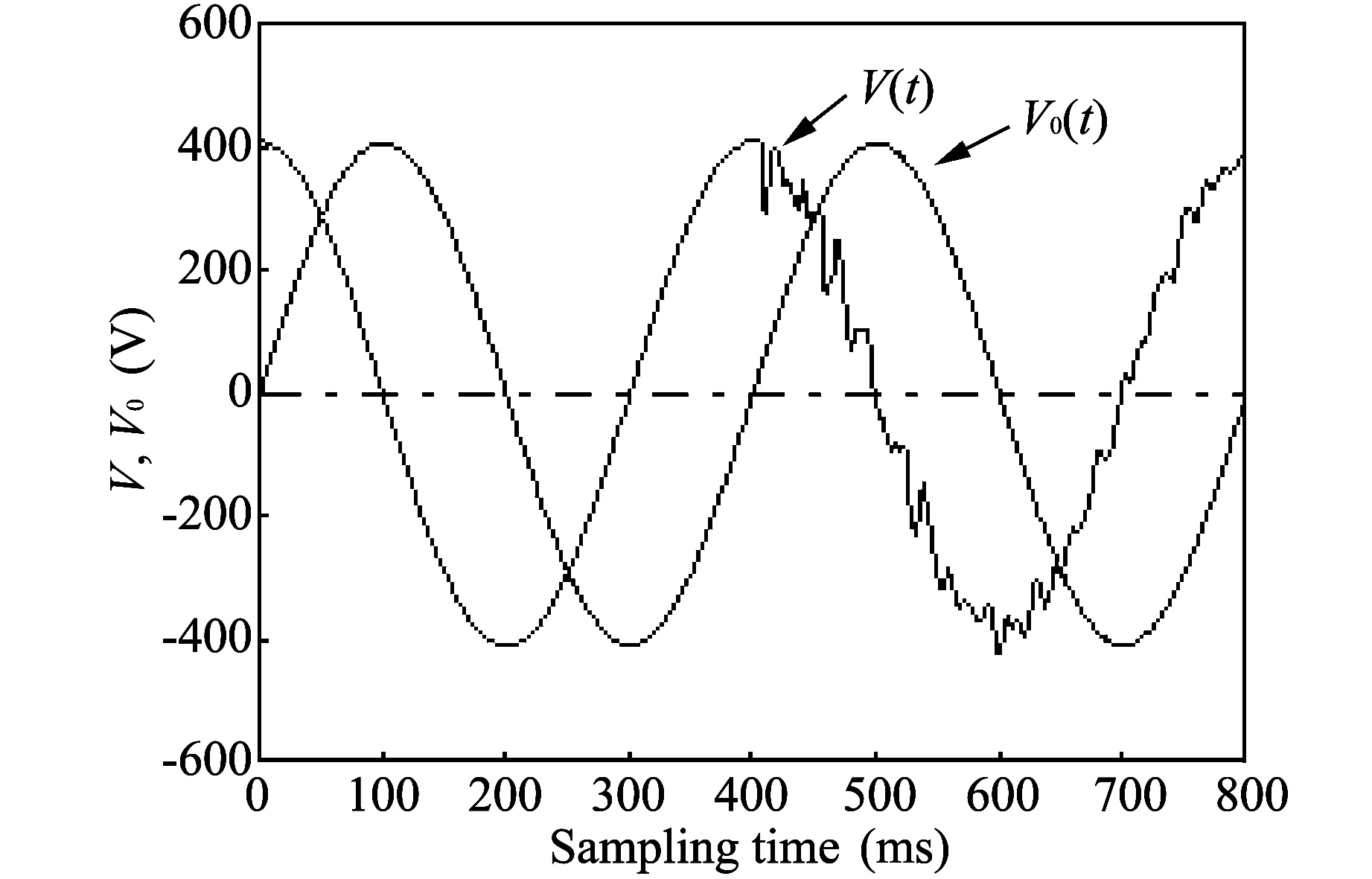
Fig.1 Normal voltage signal and its complement during abnormal condition
The value ofSCS(t) is unity as long as there is no effective change in the value ofVmaxand no extra-ordinary condition taking place.This unity relation is distorted as soon as a fault occurs.The peak voltage value is updated every one complete cycle (20 ms forf=50 Hz),where full synchronization is done between the actual voltage signalV(t) and its complementV0(t) by acquiring the utilized values at the same instant.Fig.1 showsV(t) with some disturbances due to a fault at peak voltage,while its complement signalV0(t) appears to depend only on the pre-fault peak voltage.Fig.2 showsSCS(t) during normal operation,where the unity relation is kept steady.

Fig.2 Discrimination signal during normal operation
2 Simulation study for single phasing in three phase induction motors
The case of single phasing in an induction motor is simulated using Matlab simulink[7].Fig.3 shows the simulink model for a three phase wound rotor induction motor.The parameters of the simulated wound motor are given in Table 1.

Fig.3 Matlab simulink model for single phasing of a three phase wound rotor induction machine
The case of single phasing is simulated after 1.5 s of the motor operation.Fig.4 shows the deviation in the nominal operating current values at the instant of fault occurrence,the opened phase has a zero current,while the currents of other phases increased to an extent of double the normal operating current.
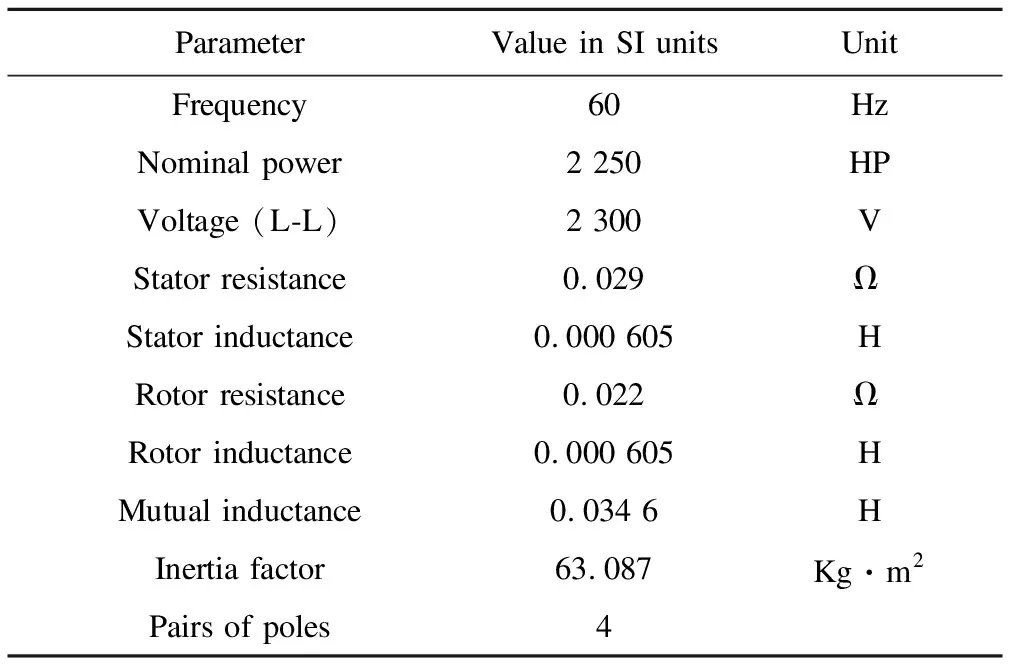
Table 1 Parameters of simulated motor

Fig.4 Deviation of three phase currents during single phasing at phase A
Fig.5 shows the measured voltage signal at the instant of fault occurrence,the opened phase voltage decreased slightly in value while the other phases remained unchanged.
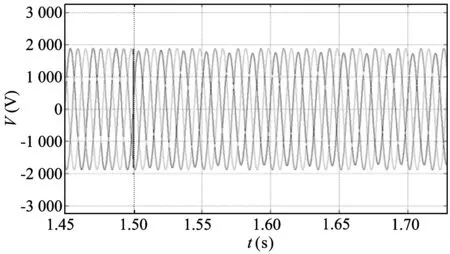
Fig.5 Three phase voltages during single phasing at phase A
The suggested cos-sin technique is applied and thenSCS(t) is obtained following Eqs.(1) to (3).The simulation is done for three different load cases,no load,half load and full load whereSCS(t) for all cases are shown in Fig.6.
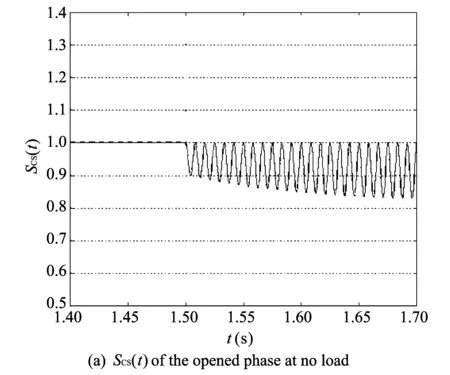
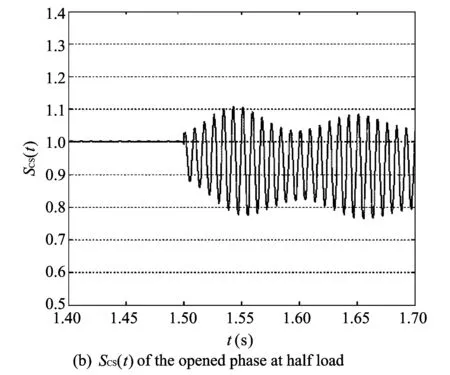
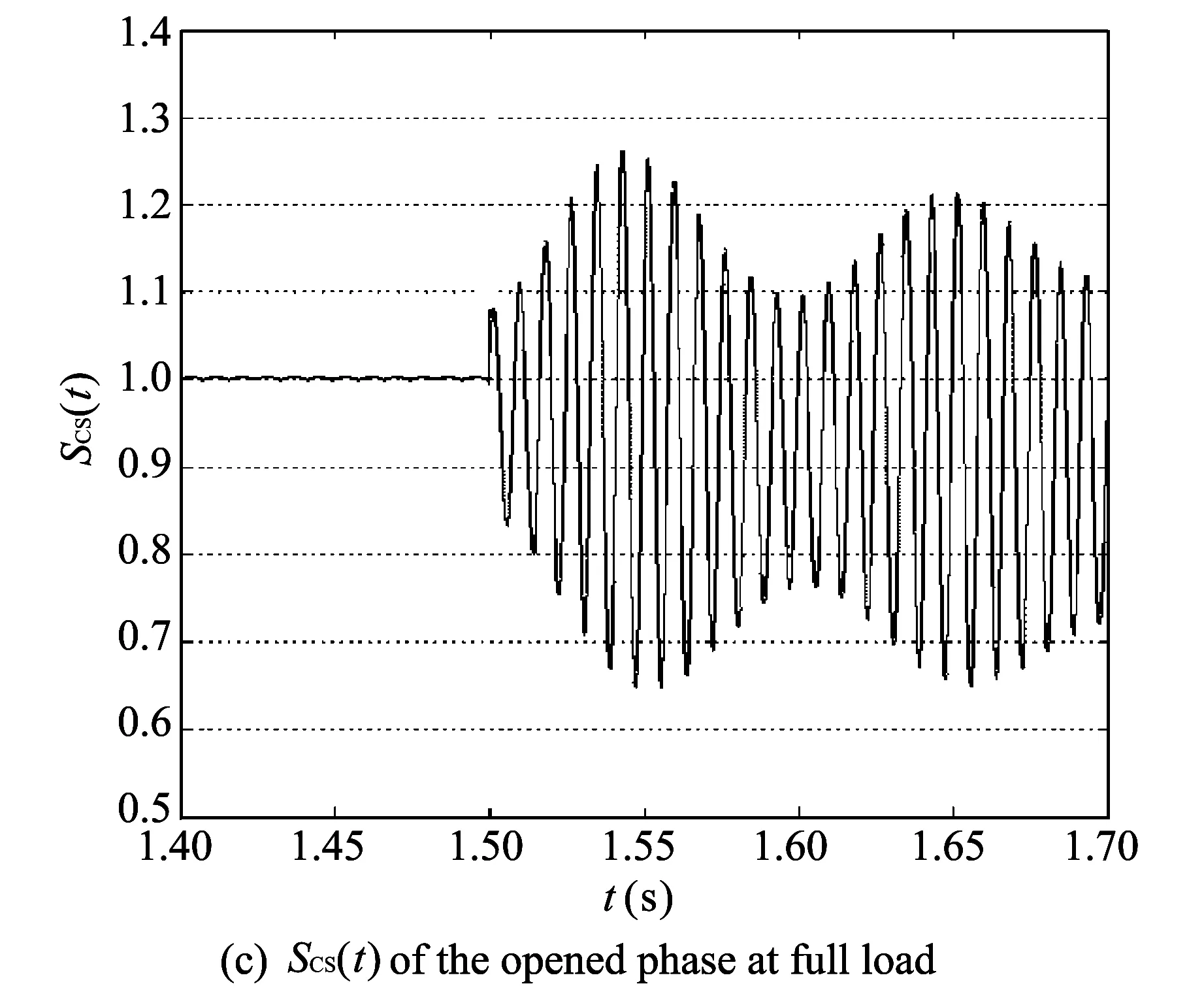
Fig.6 Simulation results under no load,half load and full load conditions
It appears clearly that the amount of maximum and minimum deviation from the unity relation ofSCS(t) increases as the load increases from zero to maximum value.Table 2 shows the deviation in the unity value ofSCS(t) during single phasing of phase A for a time of 0.2 s.From the shown values,it appears clearly that the new cos-sin tool can safely detect the case of single phasing for high voltage,three phase induction motors.
Table2DeviationinSCS(t)atdifferentloadvaluesoffaultedphase

Load level δ-faulted phaseNo load0.185Half load0.115Full load0.101
3 Fault detection criterion for single phasing
To avoid the errors that may occur in the unity relation due to any variation in the peak voltage during normal operation,since the maximum permissible variation in the peak value of the simulated network's voltage is 5%,a voltage detection threshold “ε” of a value 0.025 (0.052) is used; However,εwill just act as a trigger that initiates the operation of the cos-sin tool obtainer to start its mission of detecting fault presence.This is done via calculating the deviation “δ” inSCS(t) in one complete cycle time starting from the instant of fault occurrence,and it is given as
(4)
wherenis the number of samples of one complete cycle of the system power frequency.
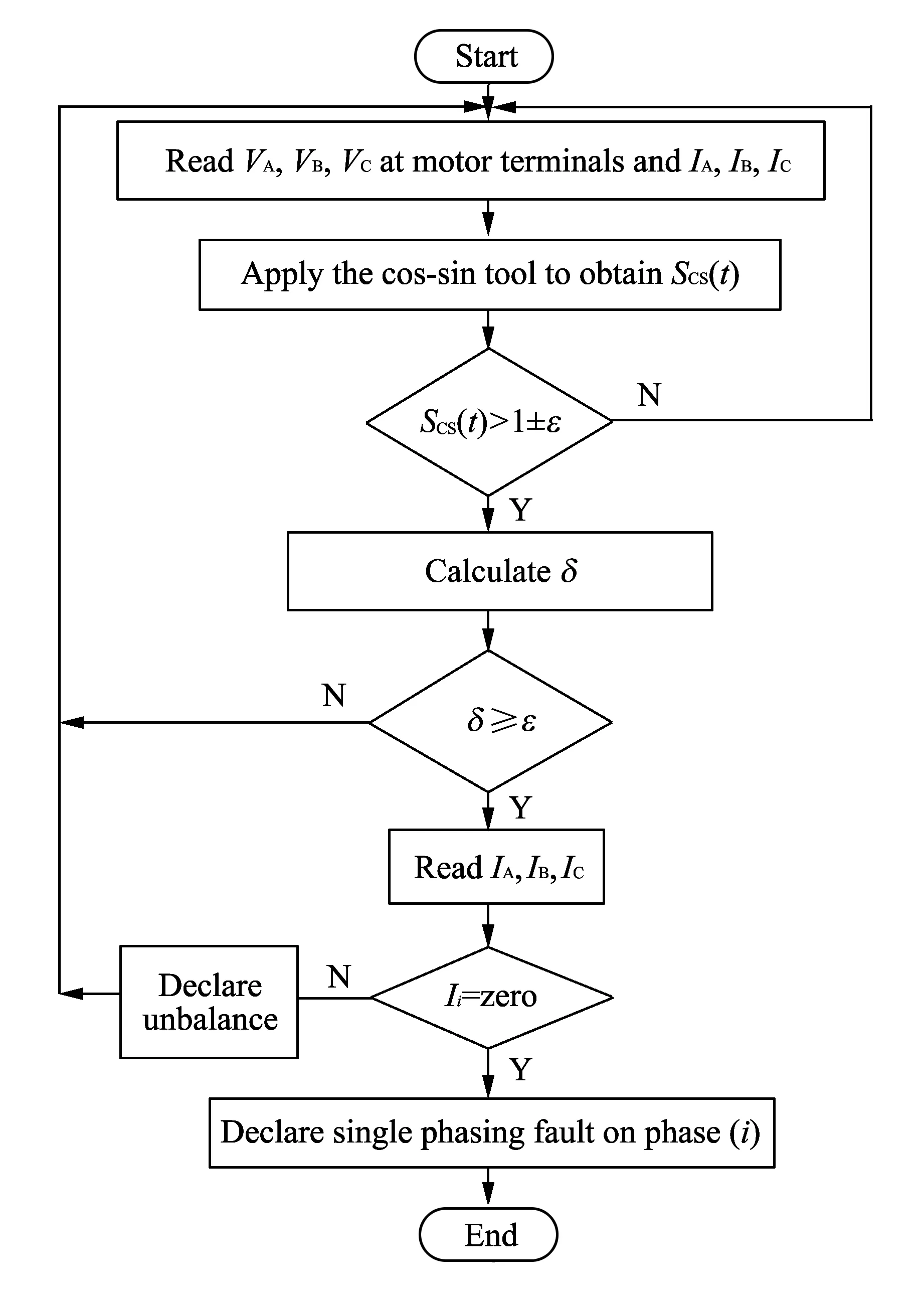
Fig.7 Flow chart of the proposed cos-sin tool for single phasing detection in three phase induction motors
One complete cycle time is used to avoid wrong triggering due to transients.
Fig.7 shows the flow chart of the proposed technique for single phasing fault detection,where both the voltage and current signals are used to differentiate between voltage unbalance and single phasing.
4 Simulation
The suggested tool was practically simulated to check its applicability for implementation in reality.All the network components were modelled where a 400 V power source linked to an auto transformer was used as a supply,a three phase low voltage induction motor that is loaded by a gear box was connected to it and a set of both single and three phase circuit breakers were connected in series and inserted in between.On tie other hand the proposed technique was programmed using the LabVIEW software[8]and all system signals were delivered to the DAQ via voltage and current transformers where they occupied No.6 analogue inputs.Tables 3 and 4 offer the specifications of the data acquisition card and the parameters of the used motor,respectively.
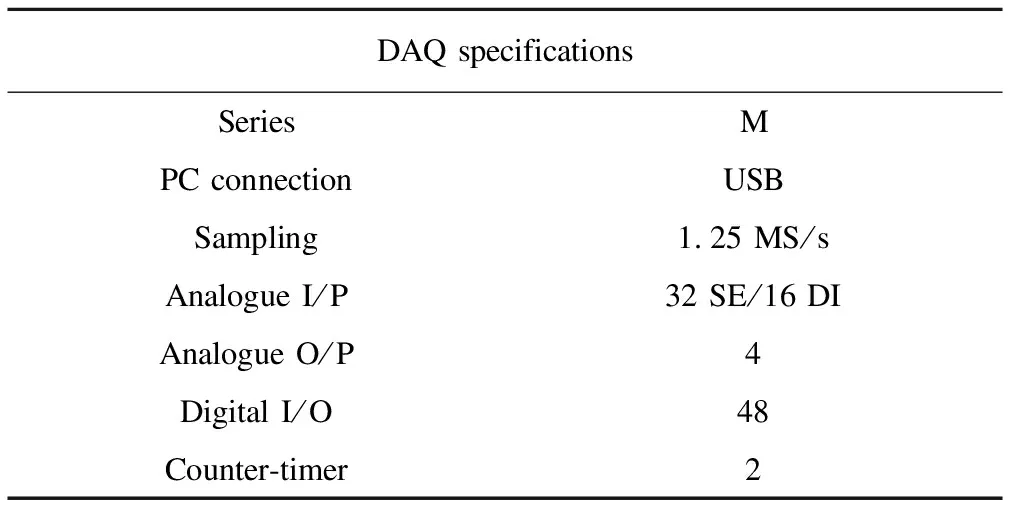
Table 3 Data acquisition card
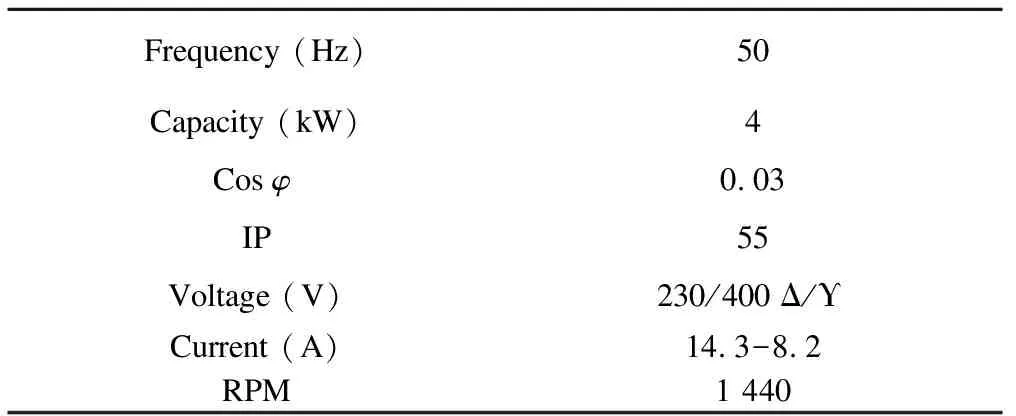
Table 4 Data of used motor
Fig.8 presents the connection of the laboratory equipment where the motor phasing condition can be obtained by using the single phase circuit breaker.
Fig.9 represents the voltage of the opened phase besides its generated complementary signal while Fig.10 represents the correspondent currents of the motor during single phasing occurrence respectively.The discrimination signal obtained is illustrated in Fig.11.
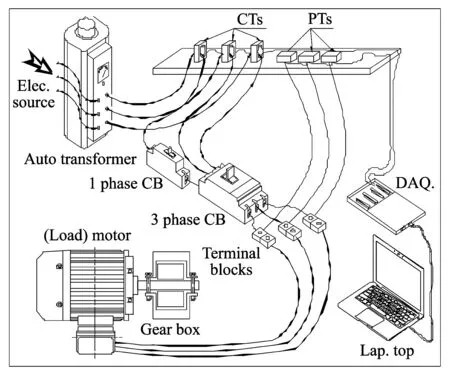
Fig.8 Laboratory model connection
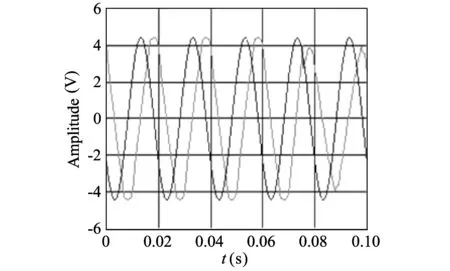
Fig.9 Opened phase voltage and its generated complementary

Fig.10 Motor 3 phases currents
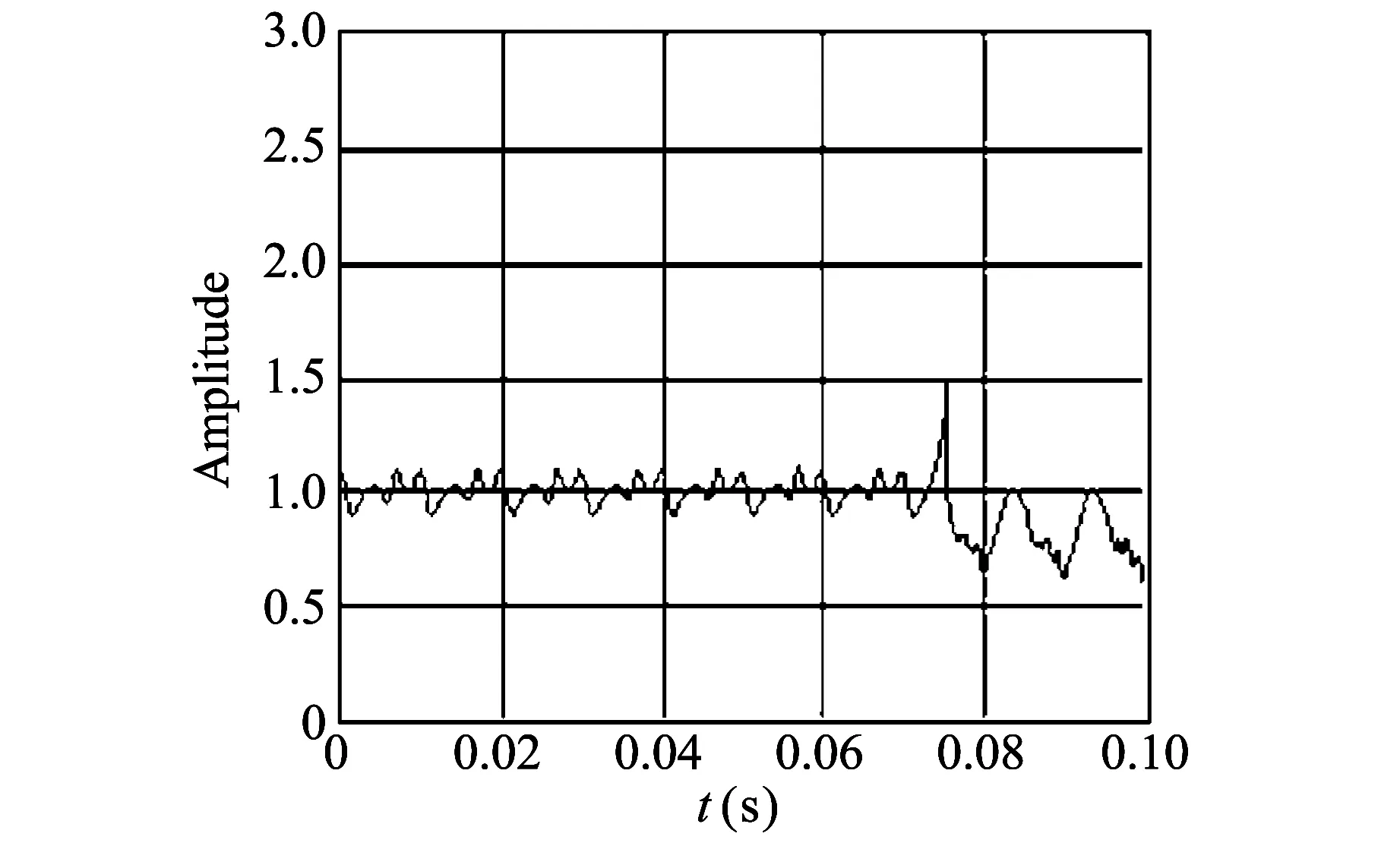
Fig.11 SCS(t) before and after single phasing
Table 5 provides the deviation in the discrimination signalSCS(t) before and after the single phasing incident.
Table5Deviation“δ”duringsinglephasingincidentatnoload

Period coveredδ during normal operationδ after single phasingHalf cycle0.050.205Full cycle0.040.193
The calculated value forδduring normal operation exceeded the threshold value used in simulation owing to the harmonic content in the voltage signal besides the errors in detecting the peak value of the original voltage signal every one complete cycle time.That resulted in using another threshold value ofε=0.06 to avoid any wrong operation.The practical simulation results acquired from the laboratory model almost concurred with the Matlab simulink simulation outcomes,they both showed the capability of the proposed cos-sin tool in capturing the case of single phasing of a motor by using the voltage signal on machine terminals.
5 Conclusion
The paper introduced a new transient based methodology for detecting the case of single phasing in high voltage three phase induction motors and also differentiates this case from single phase ground faults.The simulation results using Matlab simulink showed complete success of detecting the single phasing case under different load conditions.The laboratory results showed full success of practically applying the new transient based tool.The results also showed its capability of detecting the single phasing fault and differentiating between voltage unbalance case and single phasing one.The results of the two implemented simulations showed a large extent of compliance with each other and a great success in detecting of phase losing.The suggested tool is characterized by being simple,fast,accurate and executable within digital relaying schemes.
[1] Kersting W H.Causes and effects of unbalanced voltages serving an induction motor.IEEE Transactions on Industry Applications,2001,37(1): 165-170.
[2] Olak I C,elik H C,Sefa I,et al.On line protection systems for induction motors.Energy Conversion and Management,2005,46 (17): 2773-2786.
[3] Benbouzid M,Vieira M,Theys C.Induction motors fault detection and localization using stator current advanced signal processing techniques.IEEE Transactions on Power Electronics,1999,14(1): 14-22.
[4] Thomson W T,Fenger M.Current signature analysis to detect induction motor faults.IEEE Industry Application Magzine,2001,7(4): 26-34.
[5] Filippetti F,Franceschini G,Tassoni C,et al.Recent development of induction motor drives fault diagnosis using AI techniques.IEEE Transactions on Industrial Electronics,2000,47(5): 994-1004.
[6] Haggag S H,El-Rifaie A M,R.Sharkawy M.A novel measurement technique for extra high voltage bus bar fault detection.In: Proceedings of the 11th International Conference on Enviromental and Electrical Engineering (EEEIC),Venice,Italy,2012: 403-406.
[7] Matlab Simulink.Matlab R 2010b,2010.
[8] National Instruments.LabVIEW,2010.
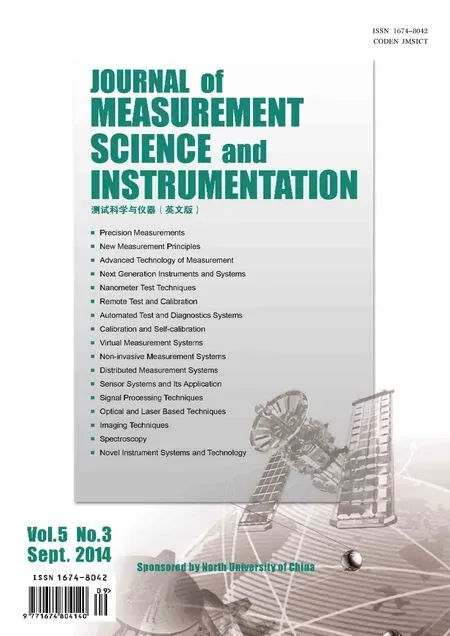 Journal of Measurement Science and Instrumentation2014年3期
Journal of Measurement Science and Instrumentation2014年3期
- Journal of Measurement Science and Instrumentation的其它文章
- Numerical simulation of projectiles with different structures penetrating multi-storey concrete target board
- Hardware implementation of adaptive filter for noise cancellation using TMS320C6713
- Error modeling of 3-RSR parallel robot based on D-H transformation matrix
- Signal de-noising method based on wavelet decomposition
